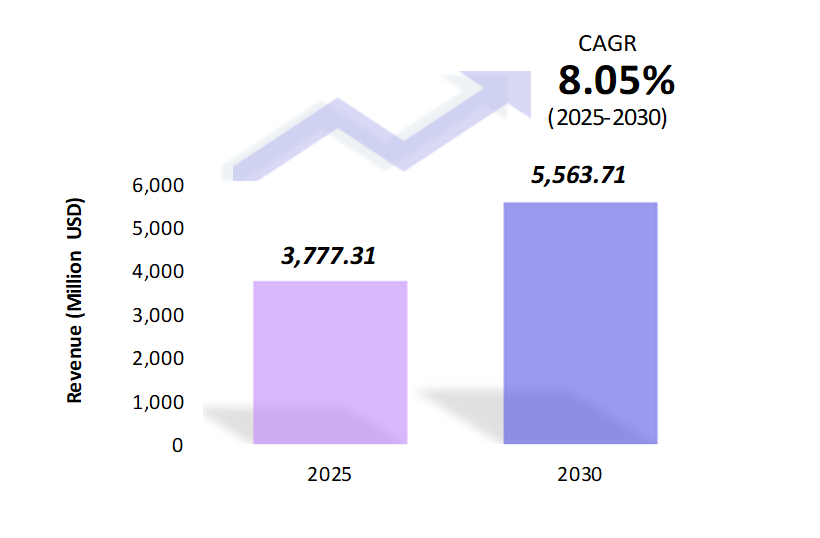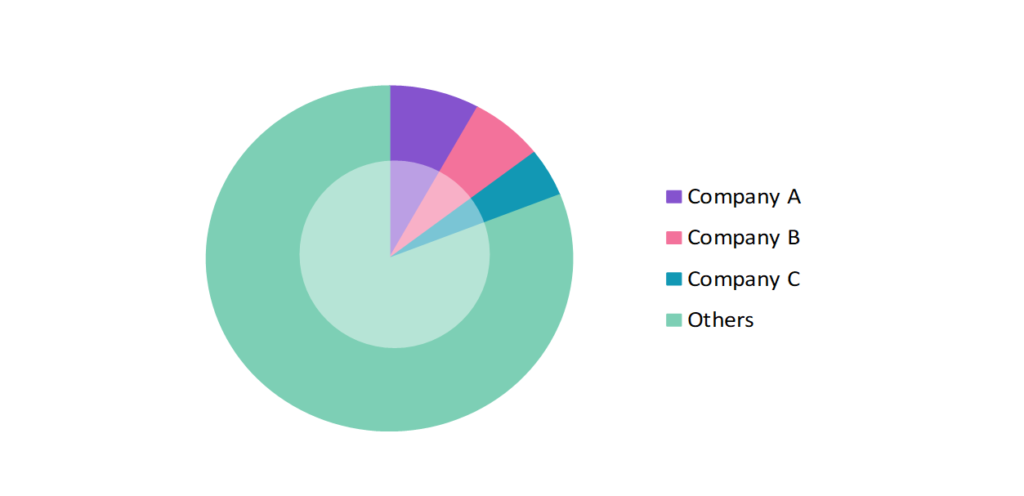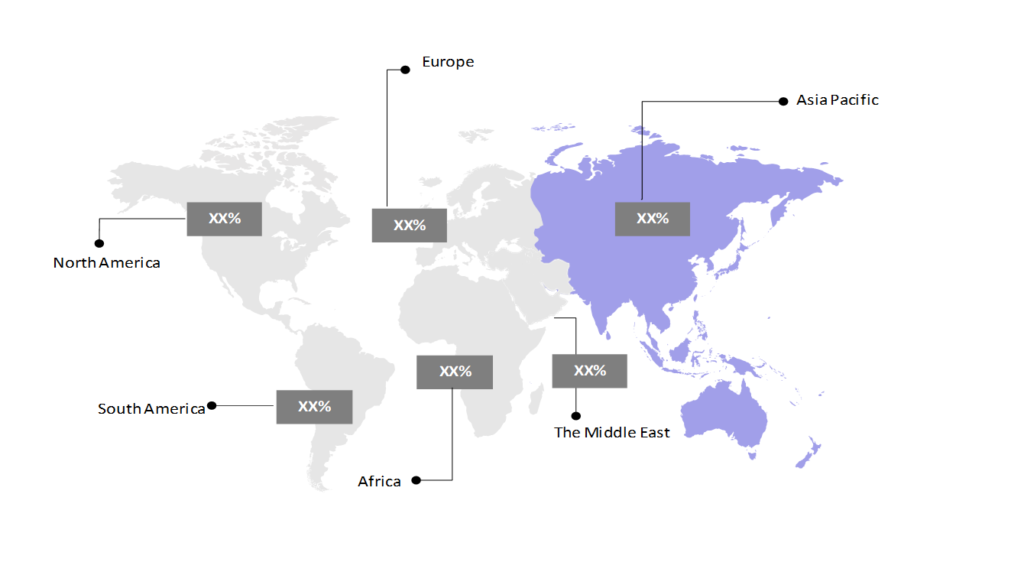Electric Rice Cooker Market Insights: Size, Share, Growth Analysis & Forecast (2024-2029)
The market report provided a comprehensive analysis segmented by Product (Standard, Multifunctional, Induction); by Application (Household, Commercial); by Geography (North America, South America, Asia Pacific, Europe, The Middle East, Africa).
Outlook

- The electric rice cooker market is estimated to be at USD 3,777.31 Mn in 2025 and is anticipated to reach USD 5,563.71 Mn in 2030.
- The electric rice cooker market is registering a CAGR of 8.05% during the forecast period 2025-2030.
- The electric rice cooker market is experiencing steady growth, driven by increasing consumer demand for convenient and multifunctional kitchen appliances. Technological advancements, such as artificial intelligence (AI) integration and smart connectivity, are transforming traditional rice cookers into versatile cooking devices. The growing emphasis on energy-efficient and smart appliances is expected to fuel future market developments.
Request a free sample.
Ecosystem

- The participants in the global electric rice cooker industry are always developing their strategies to preserve a competitive advantage.
- These companies primarily use acquisitions, R&D, partnerships, and technological launches.
- Several important entities in the electric rice cooker market include Mirama Enterprises Inc.; Stanley Black & Decker, Inc.; Panasonic Holdings Corp.; Koninklijke Philips N.V; Toshiba Corp.; and others.
Ask for customization.
Findings
| Attributes | Values |
|---|---|
| Historical Period | 2019-2023 |
| Base Year | 2024 |
| Forecast Period | 2025-2030 |
| Market Size (2025) | USD 3,777.31 Mn |
| Market Size (2030) | USD 5,563.71 Mn |
| Growth Rate | 8.05% CAGR from 2025 to 2030 |
| Key Segments | Product (Standard, Multifunctional, Induction); Application (Household, Commercial); Geography (North America, South America, Asia Pacific, Europe, The Middle East, Africa) |
| Key Vendors | Mirama Enterprises Inc.; Stanley Black & Decker, Inc.; Panasonic Holdings Corp.; Koninklijke Philips N.V.; Toshiba Corp. |
| Key Countries | The US; Canada; Mexico; Brazil; Argentina; China; India; Japan; The UK; Germany; Turkey; UAE; Saudi Arabia; Egypt; South Africa |
| Largest Market | Asia Pacific |
Get a free quote.
Trends
- Incorporation of Induction Heating Technology: Electric rice cookers are now equipped with induction heating, which uses electromagnetic fields to heat the entire inner pot. This ensures uniform heat distribution and precise temperature control, resulting in better cooking consistency.
- Fuzzy Logic and AI Integration: Modern rice cookers incorporate fuzzy logic and artificial intelligence to adjust cooking parameters like time and temperature based on the type of rice (e.g., white, brown, sushi). These AI-driven cookers adapt to variations in water level or temperature and make corrections automatically for optimal results.
- Multifunctional Cooking Modes: Many rice cookers now offer multifunctional settings, which allow users to steam vegetables, cook porridge, bake cakes, or prepare slow-cooked meals. Tiger Corporation’s rice cookers are known for offering both steaming and slow-cooking functionalities, which turn them into multipurpose devices for meal preparation.
Speak to analyst.
Catalysts
- Increasing Consumer Demand for Convenience: The rise in busy lifestyles, particularly among working professionals and urban dwellers, has led to an increasing demand for convenient kitchen appliances. Electric rice cookers with multifunctional settings that allow for easy preparation of meals like soups, stews, and cakes offer a time-saving solution. This convenience factor is driving their adoption in both developed and emerging markets.
- Growing Health Consciousness: As more consumers prioritize healthy eating, electric rice cookers with features such as whole grain, quinoa, and brown rice settings are becoming more attractive. Many cookers also provide low-oil or oil-free cooking options, meeting the rising demand for healthier meal preparation methods. This health-conscious factor is particularly noticeable in regions where diet and wellness are becoming key lifestyle priorities.
- Increasing Adoption of Smart App Connectivity: The integration of Wi-Fi and Bluetooth connectivity in electric rice cookers is enhancing user convenience by enabling remote control and monitoring via smartphone apps. This smart connectivity allows users to start, stop, or customize cooking cycles from anywhere, which makes meal preparation more flexible and hands-free. Xiaomi’s Mijia Smart Rice Cooker and Panasonic models leverage this technology, which appeals to a growing segment of users who value smart home automation and connected kitchen devices.
Inquire before buying.
Restraints
- Durability and Product Lifespan Concerns: With the increase in multifunctional and technologically advanced rice cookers, many lower-cost rice cookers use inexpensive materials that may degrade over time. The internal components, such as non-stick coatings, electrical wiring, and the heating element, can wear out, which leads to reduced performance or complete failure. Frequent use and heat cycles can accelerate this degradation, which causes rice cookers to break down sooner than expected.
- Power Supply and Energy Infrastructure Issues in Developing Regions: In regions with unreliable electricity or inadequate energy infrastructure, the adoption of electric rice cookers is hindered. Frequent power outages or voltage fluctuations can affect the performance and lifespan of these devices, which makes them less practical for consumers in areas with unstable power supply. This limits market growth in certain developing countries where energy infrastructure challenges remain a significant barrier.
- Environmental Concerns Over Electronic Waste: As electric rice cookers incorporate more advanced technologies and features, the potential for increased electronic waste (e-waste) becomes a growing concern. The frequent upgrades to newer models with enhanced functionalities can lead to the disposal of older appliances, contributing to e-waste accumulation. This issue is particularly relevant in regions with limited recycling infrastructure or where disposal practices for electronic goods are not well-regulated.
Personalize this research.
Hotspot

Explore purchase options.
Table of Contents
| 1. Introduction 1.1. Research Methodology 1.2. Scope of the Study 2. Market Overview / Executive Summary 2.1. Global Electric Rice Cooker Market (2019 – 2023) 2.2. Global Electric Rice Cooker Market (2024 – 2030) 3. Market Segmentation 3.1. Global Electric Rice Cooker Market by Product 3.1.1. Standard 3.1.2. Multifunctional 3.1.3. Induction 3.2. Global Electric Rice Cooker Market by Application 3.2.1. Household 3.2.2. Commercial 4. Regional Segmentation 4.1. North America 4.1.1. The US 4.1.2. Canada 4.1.3. Mexico 4.2. South America 4.2.1. Brazil 4.2.2. Argentina 4.2.3. Rest of South America 4.3. Asia Pacific 4.3.1. China 4.3.2. India 4.3.3. Japan 4.3.4. Rest of Asia Pacific 4.4. Europe 4.4.1. The UK 4.4.2. Germany 4.4.3. Rest of Europe 4.5. The Middle East 4.5.1. Turkey 4.5.2. UAE 4.5.3. Rest of the Middle East 4.6. Africa 4.6.1. Egypt 4.6.2. South Africa 4.6.3. Rest of Africa 5. Value Chain Analysis of the Global Electric Rice Cooker Market 6. Porter Five Forces Analysis 6.1. Threats of New Entrants 6.2. Threats of Substitutes 6.3. Bargaining Power of Buyers 6.4. Bargaining Power of Suppliers 6.5. Competition in the Industry 7. Trends, Drivers and Challenges Analysis 7.1. Market Trends 7.1.1. Market Trend 1 7.1.2. Market Trend 2 7.1.3. Market Trend 3 7.2. Market Drivers 7.2.1. Market Driver 1 7.2.2. Market Driver 2 7.2.3. Market Driver 3 7.3. Market Challenges 7.3.1. Market Challenge 1 7.3.2. Market Challenge 2 7.3.3. Market Challenge 3 8. Opportunities Analysis 8.1. Market Opportunity 1 8.2. Market Opportunity 2 8.3. Market Opportunity 3 9. Competitive Landscape 9.1. Mirama Enterprises Inc. 9.2. Stanley Black & Decker, Inc. 9.3. Panasonic Holdings Corp. 9.4. Koninklijke Philips N.V. 9.5. Toshiba Corp. 9.6. Company 6 9.7. Company 7 9.8. Company 8 9.9. Company 9 9.10. Company 10 |
Know the research methodology.
Electric Rice Cooker Market – FAQs
1. What is the current size of the electric rice cooker market?
Ans. In 2025, the electric rice cooker market size is USD 3,777.31 Mn.
2. Who are the major vendors in the electric rice cooker market?
Ans. The major vendors in the electric rice cooker market are Mirama Enterprises Inc.; Stanley Black & Decker, Inc.; Panasonic Holdings Corp.; Koninklijke Philips N.V; Toshiba Corp.
3. Which segments are covered under the electric rice cooker market segments analysis?
Ans. The electric rice cooker market report offers in-depth insights into Product, Application, and Geography.
